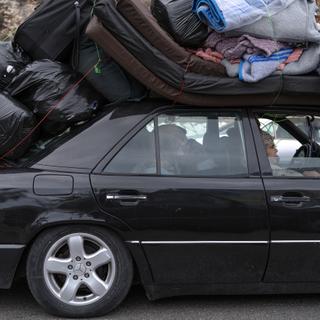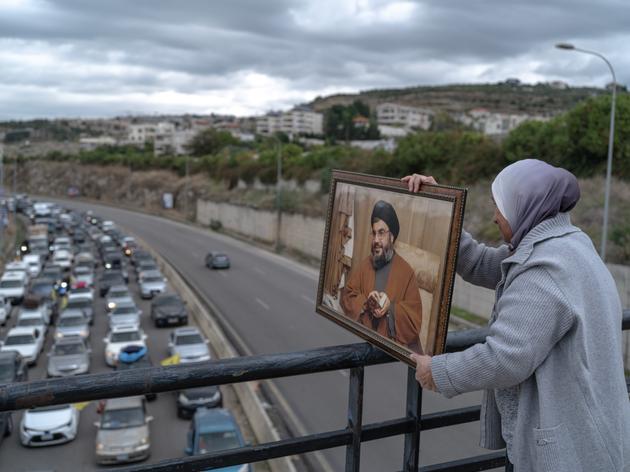


Displaced Lebanese return home after ceasefire: 'I'm standing, but I'm dead inside'
FeatureAs the truce with Israel began at dawn on November 27, 1.2 million people set out for southern Lebanon, the Beqaa Valley or the capital's southern suburbs, caught between desolation and relief.
At dawn on Wednesday, November 27, as soon as the ceasefire with Israel came into effect, tens of thousands of displaced Lebanese, their cars topped with mattresses and packed to the brim with children and bags of clothing, rushed into the traffic jams that had formed on the coastal highway heading south. Late into the night, the stream of vehicles showed no sign of stopping. On their weary faces, the relief of finally returning home was mixed with the fear of finding them destroyed or looted after two months of war – or even 13 months, for those from border villages.
Some had hung yellow Hezbollah flags from their cars and plastered photos of its leader, Hassan Nasrallah, killed by Israel on September 27, to the windows. Shiite party activists handed them out along the road, along with chocolates. The end of the fighting and the return of 1.2 million displaced persons to southern Lebanon, in the Beqaa Valley and Beirut's southern suburbs, feels like a victory for the Party of God. It held its ground – that is the main thing – even if the truce is still fragile and the Israeli army plans only a gradual withdrawal from the few kilometers of the border strip it controls.
"It's a victorious day, of course! Despite the destruction, the martyrs and the exile, our support for the resistance is unwavering," said Safaa Jaber, her voice firm but her eyes red from crying. The 27-year-old mother and her husband, Hamada, stopped off at the Kfar Tebnit traffic circle – now adorned with a rocket launcher and Hezbollah flags – before heading home. They paused outside the building, flattened by an Israeli strike, which used to be Hamada's grocery store. A portrait of Safaa's brother Wael, a Shiite party volunteer, was hung from the building. He died there on October 14 in an Israeli bombardment.


The "victory" has a bitter taste. In the village of Yohmor, 7 kilometers to the south, a drone buzzed in the sky. Israeli soldiers remain stationed in Deir Mimas, on the hill opposite, near the Beaufort Castle. Beneath the drizzle, the residents of this village of 4,000 people, battered by bombings during the war, were left stunned as they took in the extent of the destruction. A crater now lies where Djamal Chmeysani's two-story house once stood. A white tile caught the light amid the twisted metal and concrete. "That's my bathroom!" said the 39-year-old specialist educator laughing nervously, before walking away to burst into tears.
You have 68.03% of this article left to read. The rest is for subscribers only.
